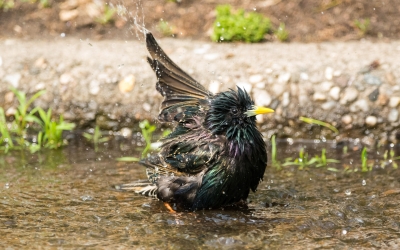Is Sargassum seaweed harmful to humans?

In the centre of the North Atlantic Ocean, amidst the vast blue expanse, is a huge floating mat of brown seaweed called sargassum. These mats are quite common in the Sargasso Sea, a region around Bermuda. The region has been named after the seaweed. These floating mats of seaweed were first reported by Christopher Columbus in the 15th Century. But since 2011, the Atlantic Ocean has been witnessing massive sargassum blooms every year. It stretches nearly 9000 km from West Africa to the Gulf of Mexico. Scientists call this the Great Atlantic Sargassum Belt. The seaweed band has been getting bigger every year, posing a serious threat to marine life, coastal ecosystem and the fishing communities dependent on it.
Sargassum is a genus of large brown seaweed (a type of algae) that floats in island-like masses. The seaweed species found in the Great Atlantic Sargassum Belt include Sargassum natans and Sargassum fluitans. They have many leafy appendages, branches, and round, berry-like structures called pneumatocysts, which keep them buoyant and close to the surface. The seaweed band attracts fish, shrimp, crabs, birds, and turtles, providing essential habitats. The seaweed is in turn nourished by the excrement of these organisms. Even larger creatures find plenty to eat amid the sargassum.
While the seaweed can be a boon for marine wildlife under normal circumstances, too much of it can pose a huge problem. As sargassum decays it consumes the oxygen, creating low oxygen conditions that affect marine life. Coral reefs and seagrass ecosystems can suffer when high levels of sargassum change water chemistry and block organisms from moving freely. Thick mats can also block sunlight from reaching the ocean depths. The seaweeds often wash up ashore en masse and choke coastal ecosystems. As the seaweed rots, it releases foul-smelling hydrogen sulphide gas, causing respiratory illness in local populations. They also affect coastal tourism.
Recurrent blooms
Scientists are concerned over the recurrent blooms having become the new normal. They attribute it to various factors such as warming of the ocean due to climate change, discharge of nutrients (nitrogen and phosphorus) from agricultural run-off and wastewater originating from major river basins such as the Congo and the Amazon and the deposition of iron and nutrient-rich Saharan dust on the ocean. Scientists say that multidisciplinary research and international efforts are required to address this issue.
Picture Credit : Google

